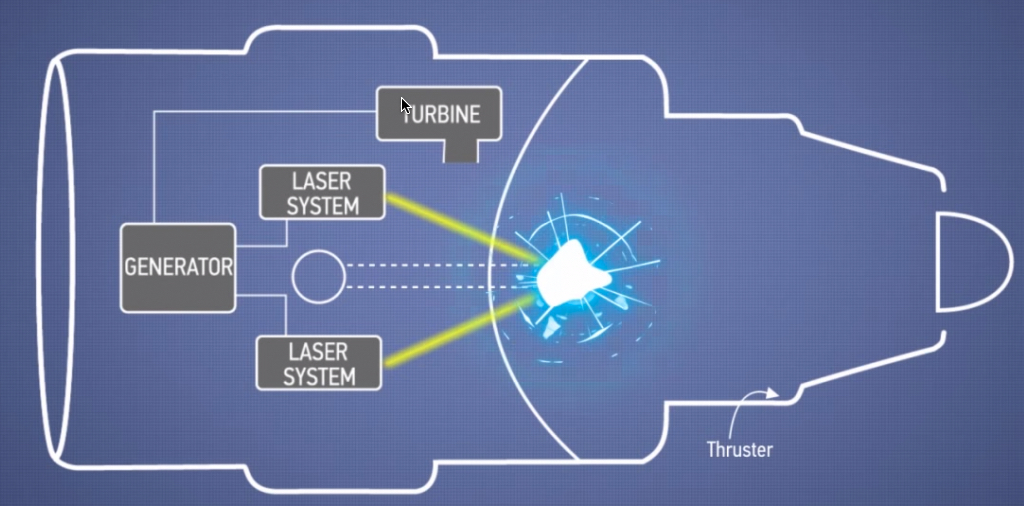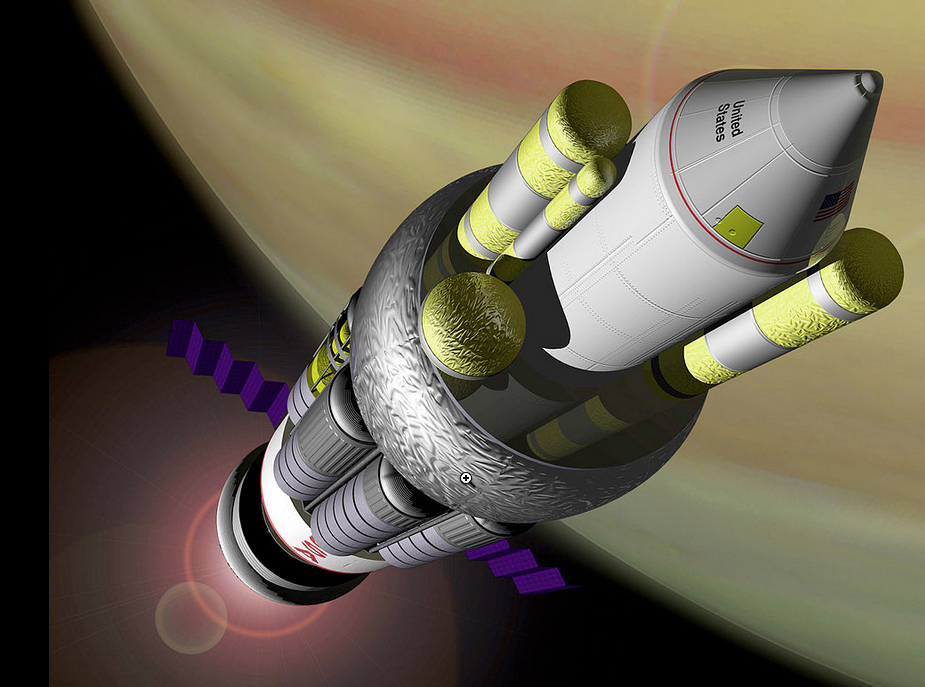A jet engine powered by lasers and nuclear explosions?
July 14, 2015

Lasers vaporize radioactive material and cause a fusion reaction — in effect, a small thermonuclear explosion (credit: Patent Yogi/YouTube)
The U.S. Patent and Trademark Office has awarded a patent (US 9,068,562) to Boeing engineers and scientists for a laser- and nuclear-driven airplane engine.
“A stream of pellets containing nuclear material such as Deuterium or Tritium is fed into a hot-stop within a thruster of the aircraft,” Patent Yogi explains. “Then multiple high powered laser beams are all focused onto the hot-spot. The pellet is instantly vaporized and the high temperature causes a nuclear fusion reaction. In effect, it causes a tiny nuclear explosion that scatters atoms and high energy neutrons in all directions. This flow of material is concentrated to exit out of the thruster thus propelling the aircraft forward with great force.
“And this is where Boeing has done something extremely clever. The inner walls of the thurster are coated with a fissile material like Uranium-238 that undergoes a nuclear fission upon being struck by the high energy neutrons. This releases enormous energy in the form of heat. A coolant is circulated along the inner walls to pick up this heat and power a turbine which in turn generates huge amounts of electric power. And guess what this electric power is used for? To power the same lasers that created the electric power! In effect, this space-craft is self-powered with virtually no external energy needed.
“Soon, tiny nuclear bombs exploding inside a plane may be business as usual.”

An artist’s conception of the NASA reference design for the Project Orion spacecraft powered by nuclear propulsion (credit: NASA)
The basic concept was initially proposed by physicist Freeman Dyson in his Project Orion concept in 1957 and described on George Dyson’s Project Orion — The Atomic Spaceship 1957-1965 book.